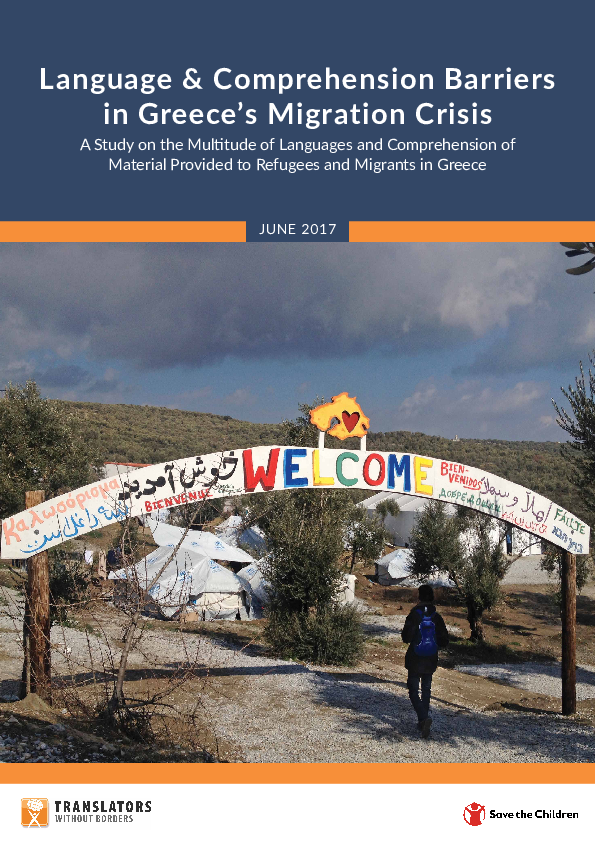
Reports, Study: Research
Language & Comprehension Barriers in Greece’s Migration Crisis: A study on the multitude of languages and comprehension of material provided to refugees and migrants in Greece
Publication year:
2017
English
Format:
pdf (2.5 MiB)
Publisher:
Save the Children,Translators without Borders
A notable feature of the refugee crisis starting in 2015 has been the diversity of languages and ethnicities of refugees and migrants. Approximately 95 percent of the refugees and migrants who arrived in Greece in 2015 and 2016 came from seven countries: Syria, Afghanistan, Iraq, Pakistan, Iran, the Democratic Republic of the Congo (DRC), and Algeria. They reflect the diversity of ethnic groups in those countries and speak an array of languages and dialects – including Arabic, Kurmanji, Sorani, Dari, Farsi, French, Lingala, Baluchi, Urdu or Pashto, among others. To consult an asylum seeker on his or her needs and concerns, service providers need to communicate in his or her language, as well as take account of accents, dialects, and levels of literacy.
In order to be accessible and effective, assistance must first be understood by the affected population, yet this research suggests much information is not getting through even to speakers of the more prevalent languages among the refugee and migrant population. The primary objective of this research is to explore whether the information provided to refugees and migrants in Greece is effective, measured against four key criteria: accessibility, readability, comprehensibility, and usefulness.
Read full abstract
Authors
View & Download
Document information
Publisher
Authors
Format
Content type
Country
Region
Rights
© Author/Publisher
Found a mistake? Help us improve!
If you have noticed a document assigned to the wrong author or any other inaccuracies, let us know! Your feedback helps us keep our data accurate and useful for everyone.
Share
Link
